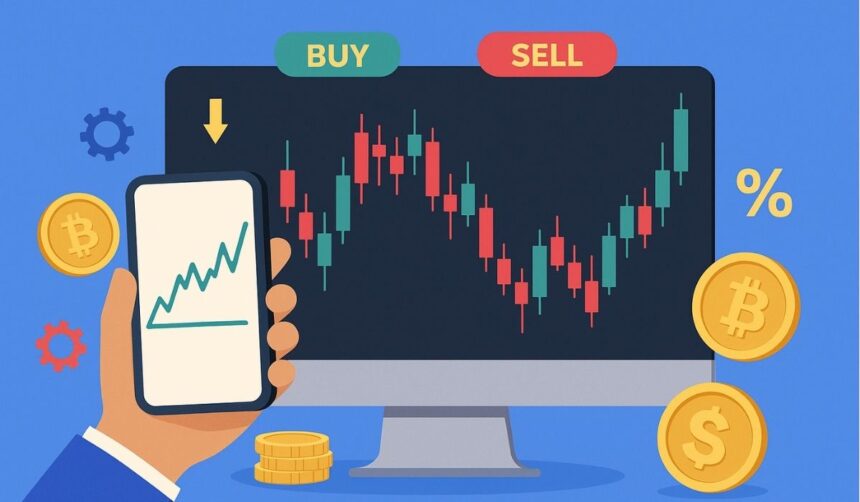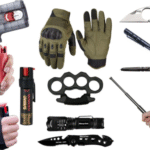Trading isn’t something invented in recent years. It’s been a part of human life for centuries. Back then, it was spices and silk. Today, it’s digital coins and tokens moving across the internet. The tools have changed, yes, but the intent remains the same, figure out how value moves, and try to benefit from it.
That’s what draws many toward crypto trading. The numbers don’t lie. Over the past couple of years, crypto trading volume has grown massively, with one quarter in 2024 alone seeing a +111.7% increase. That kind of pace is hard to ignore. But with opportunity comes uncertainty. This market isn’t quiet, it isn’t slow, and it definitely doesn’t wait. Volatility is the name of the game here, it can open doors to big moves, but it also comes with real risk.
Now, if you’re someone who’s been thinking about getting into this space but aren’t sure where to begin, here are five steps to becoming a crypto trader, drawn from real traders, real habits, and real mistakes. It’s not financial advice, just a direction, drawn from how many have walked the path before.
Inside the Crypto Trading Universe
The world of crypto trading doesn’t sleep. Unlike traditional markets that close after office hours, crypto operates non-stop; across continents, across devices, and across experience levels. It doesn’t matter where you’re operating from; your desk or your phone, trades are being made every second.
It’s not just the 24/7 aspect. It’s the speed. Prices move fast. News spreads even faster. And platforms today give access to everything from simple spot trading to more advanced markets like perpetual contracts and decentralized options. But that doesn’t mean you need to dive into everything at once. Most successful traders actually start small. They spend more time watching than reacting. They figure out what suits their style before risking much.
That’s the beauty of this market. It gives room to learn, if you’re willing to slow down and study it.
How to Start: 5 Steps to Becoming a Crypto Trader
- Know Why You’re Getting Into This
You need clarity, not hype. People jump into crypto trading for different reasons. Some want to build side income. Others are curious about DeFi. A few just want to try their luck. No reason is right or wrong. What matters is knowing yours.
Without that awareness, every dip will feel like panic, and every pump will feel like a missed opportunity. But when you have a clear motive, it helps you filter out the noise and stick to your plan.
Anthony Pompliano, an investor and trader with a massive following, once said:
“The best way to become a successful crypto trader is to start with a small amount of capital that you can afford to lose, and use it to learn the ropes. Don’t jump in with both feet until you’ve gained some experience and developed a solid strategy.”
Let that sit for a second. Start small. Start aware.
- Understand the Market’s Language
It’s not just about charts and green or red candles. It’s about what those candles mean. Each price movement tells a story. Learn how to spot support and resistance zones. Learn what a fake breakout looks like. Learn how to spot when a trend is reversing. There are hundreds of patterns and techniques, but the goal is not to memorize, it’s to understand what the market is trying to say.
Start by watching. Observe. Journal what you see. Learn from those whose teaching style clicks with you. A lot of traders lose money simply because they tried to trade someone else’s method instead of shaping their own.
Here’s one tip from CryptoCred, and it’s deceptively simple but cuts deep:
“When taking a trade, always know where you’re wrong. If you trade without knowing where you’re wrong – you’re gambling.”
That one mindset shift is what separates a trader from a guesser.
- Build Your Setup & Use the Right Tools
Tools don’t make the trader, but the right tools do make things easier. You’ll need an exchange, something that’s reliable and easy to use. You’ll need an exchange. Not just any exchange, and definitely not the one everyone else is using just because it’s popular. Picking a platform that fits your trading style is an option.
Exchanges vary. Some are built for day-trading with fast order books, others are geared toward high-leverage setups or specific markets. So ask yourself: what kind of trader are you? That’ll tell you where you should be trading.
Wallets come next. MetaMask is common, but don’t stop there. Explore other options based on the assets you want to trade.
If you’re confused about where to begin or need to compare platforms side by side, check out CryptoWinRate. It helps simplify the process without pushing hype. Everything from fees to supported tokens is broken down clearly so you can focus on learning, not guessing.
- Practice the Right Way, With Real Skin in the Game
Theory teaches you concepts. Trading real money, even small amounts, teaches you behavior. So many new traders freeze up, waiting for the “perfect” setup, or they go all in too fast. You can’t know how you’ll react to price swings until you’re in the market. If you’re nervous, start with demo trading first, it’s a safe way to test strategies without risking capital. Most major exchanges and charting platforms like TradingView support it.
Once you feel ready, move to small real-money trades. Pick coins that have steady market activity, nothing obscure. Stick to spot trades in the beginning. Futures can wait.
Record your entries and exits. Write down what you saw, why you entered, and how it played out. Review this journal often. It’ll tell you more about yourself than any indicator ever will.
Trading with even $20 will trigger emotion. And learning to manage that emotion is half the game.
- Manage Risk or the Market Will Do It for You
Risk management isn’t an advanced concept. It’s the baseline. Decide how much you’re willing to lose before you place a trade. Use stop-losses. Don’t go all-in. Most people don’t fail because they never found a winning setup. They fail because they didn’t protect their capital.
Most importantly, understand this: survival is underrated. The ones who last don’t trade more, they lose less. They stay around long enough to learn what works. That’s how you build longevity in this game.
Even professional traders with years of experience talk about this constantly. Why? Because it’s the one thing people ignore the most.
Trading Tips That Actually Work
There’s no shortage of flashy tips online. But here’s what’s actually useful: learn from traders whose thinking aligns with yours. Don’t copy them, study them. Observe how they react to trends. Watch how they manage entries and exits. See how they journal, how they track their own data.
Take what works for you and leave what doesn’t. Keep adjusting. Keep simplifying. Some of the best traders have only one or two setups. But they’ve mastered them.
And again, never enter a trade without knowing the point at which you’ll admit you’re wrong. That small shift in thinking might be the only thing keeping you from turning a good trade into a disaster.
A Craft, Not a Shortcut
These steps to becoming a crypto trader don’t promise results. What they offer is a direction. This is a craft, not a shortcut. The traders who succeed aren’t always the smartest, they’re usually the most patient. They learn the tools. They manage their risk. They adapt. And above all, they stay in the game.
The goal isn’t to win every trade. It’s to build confidence, build structure, and build awareness. One good setup repeated consistently will take you further than chasing new strategies every week.
If you’re looking for the first step, take it slow. Focus on learning. Build a system you understand. The rest will follow, one trade at a time.











